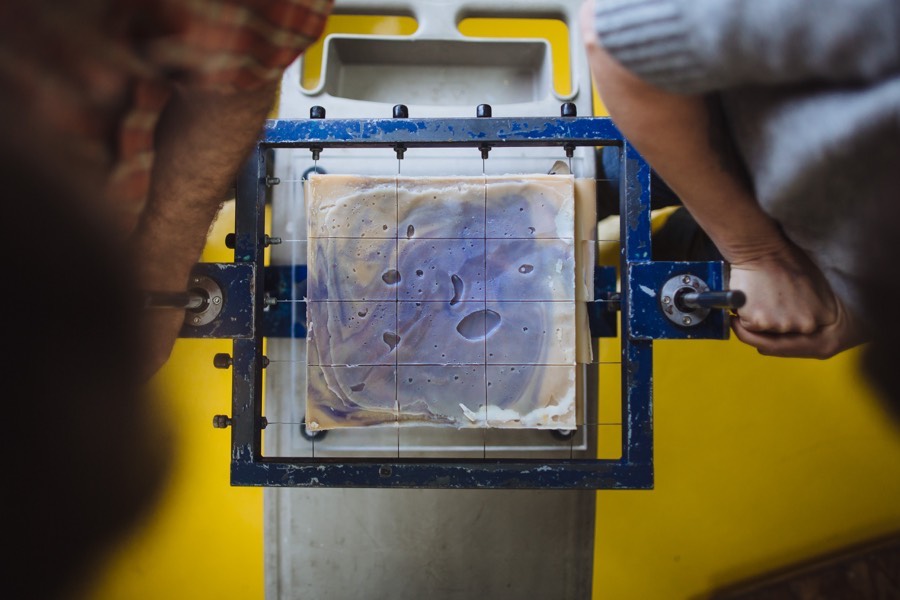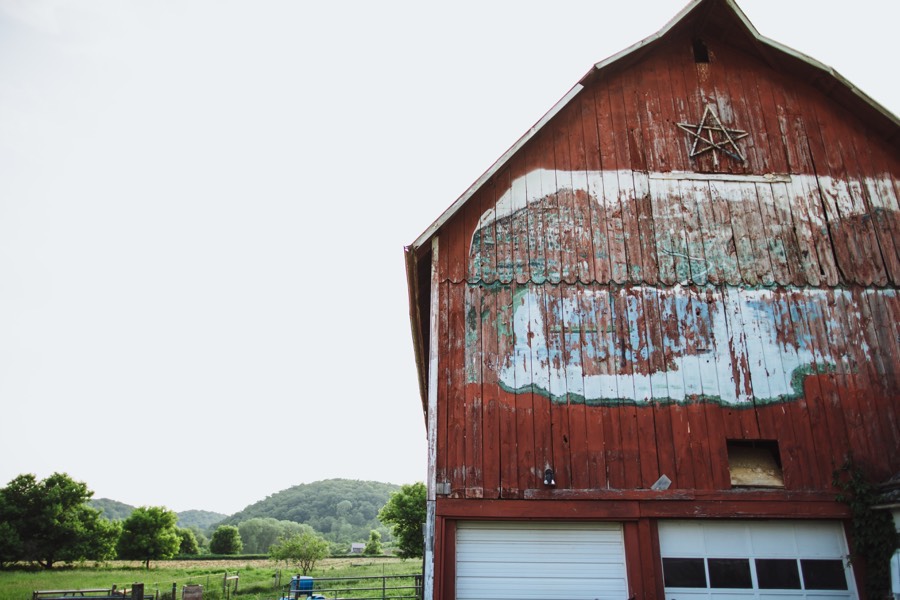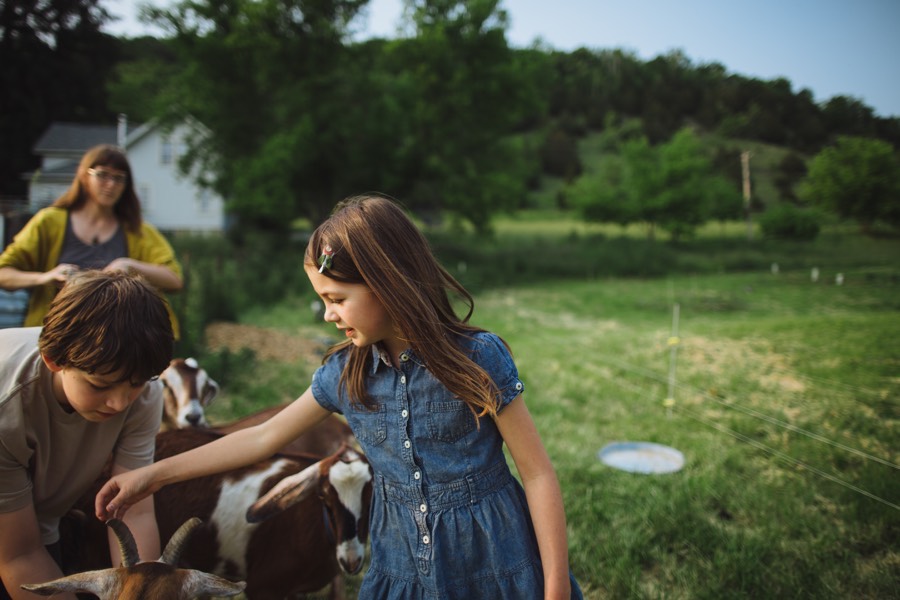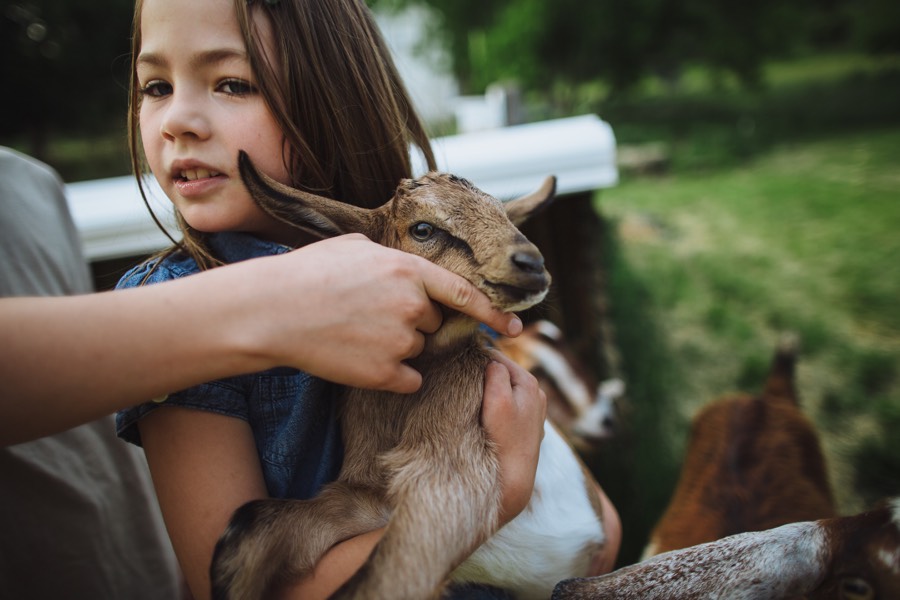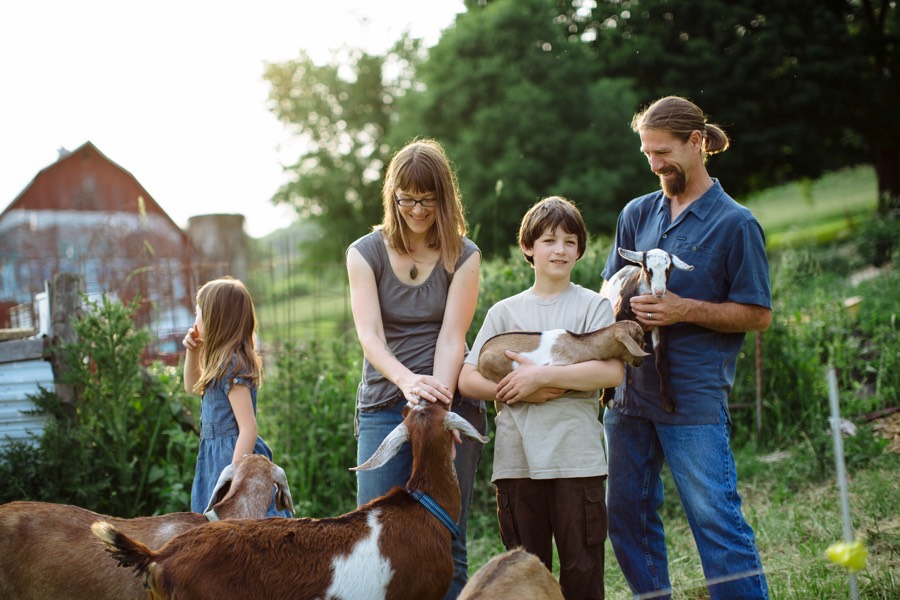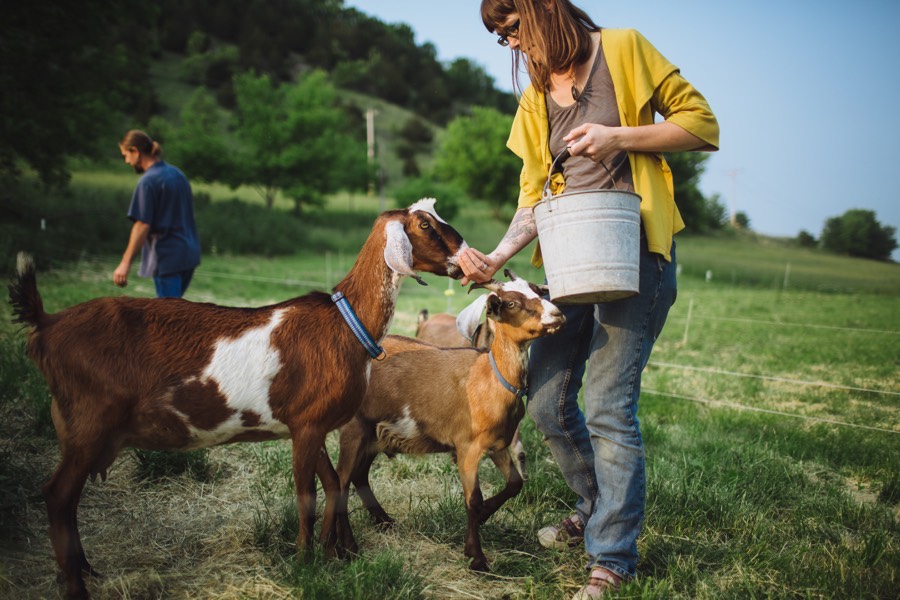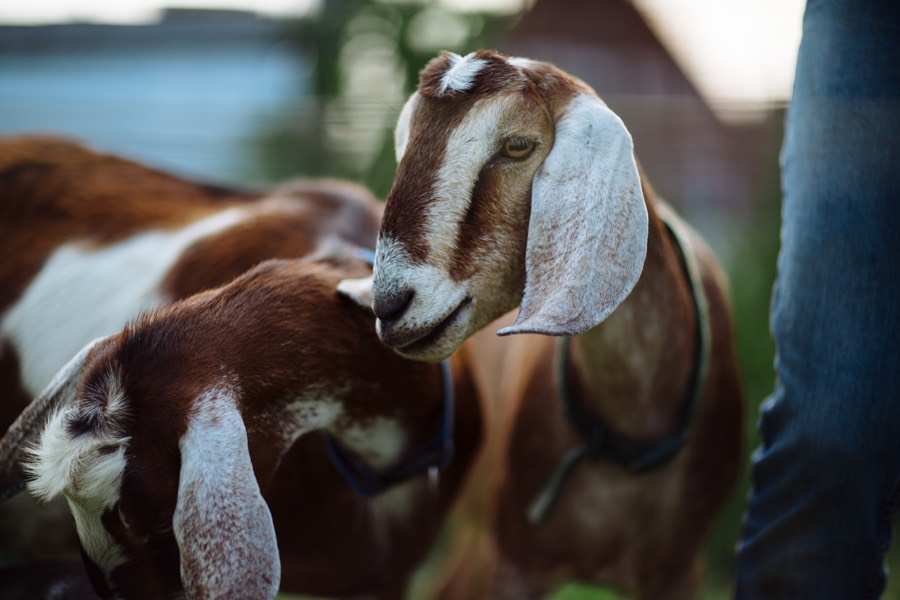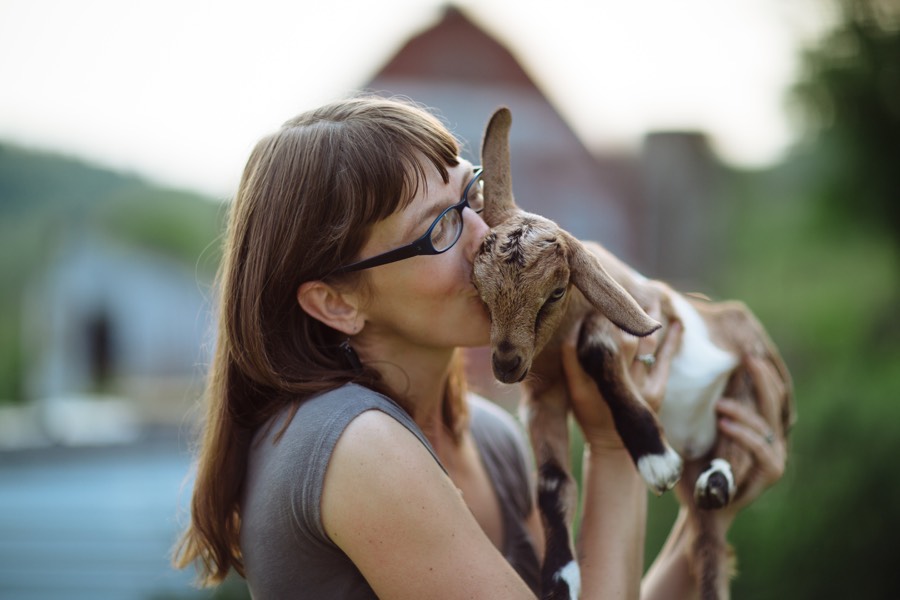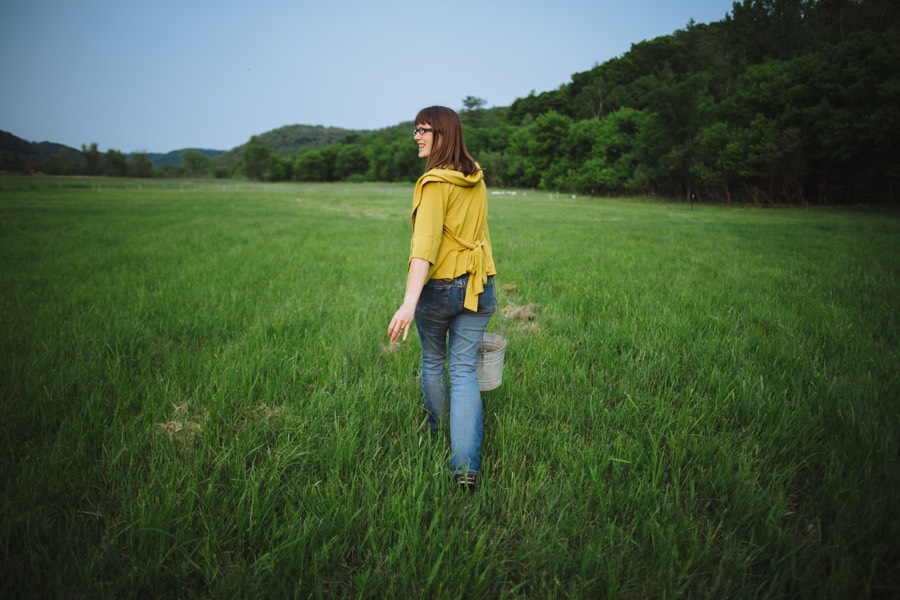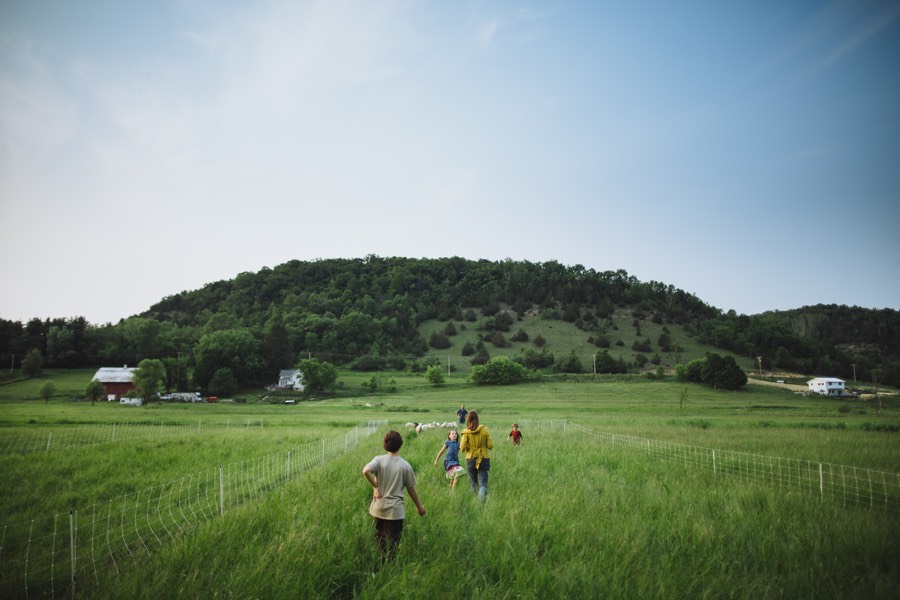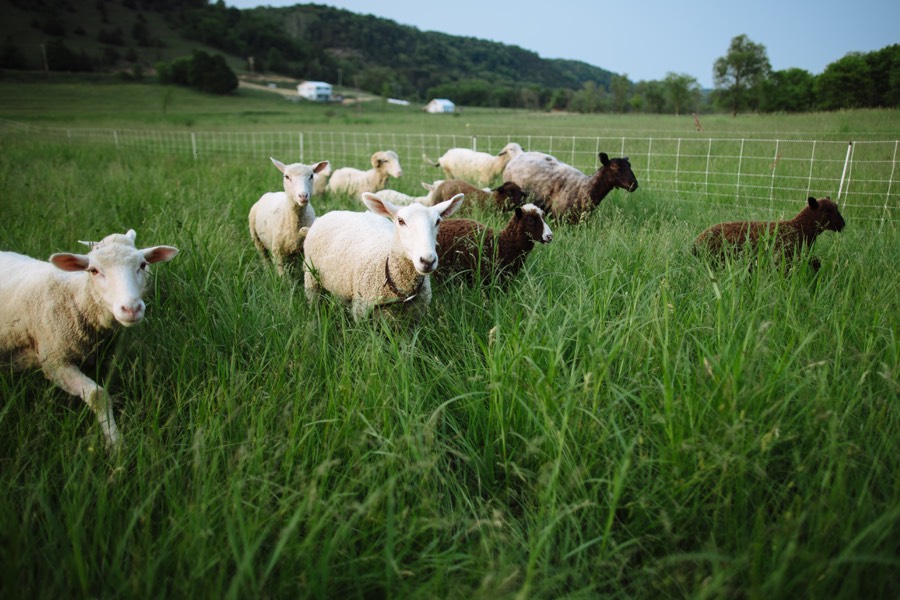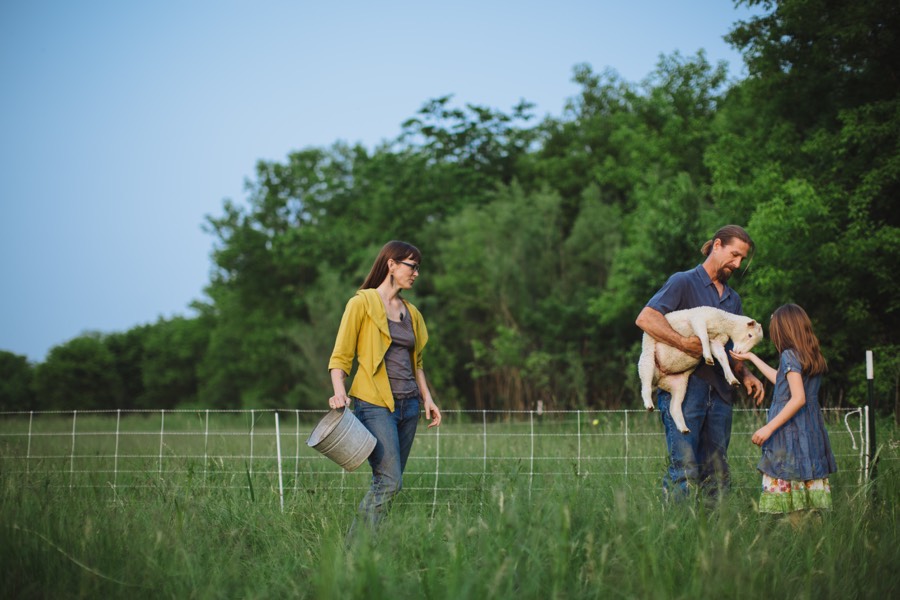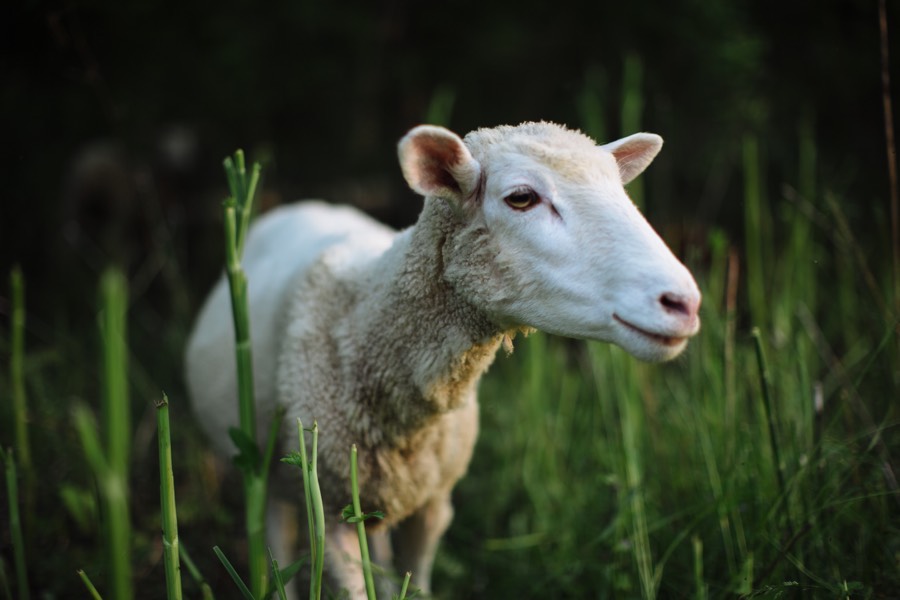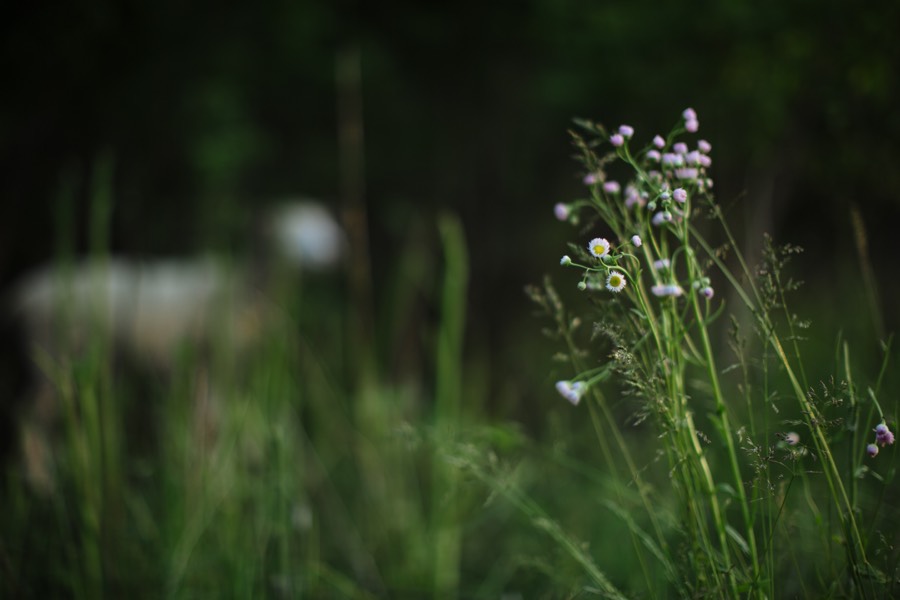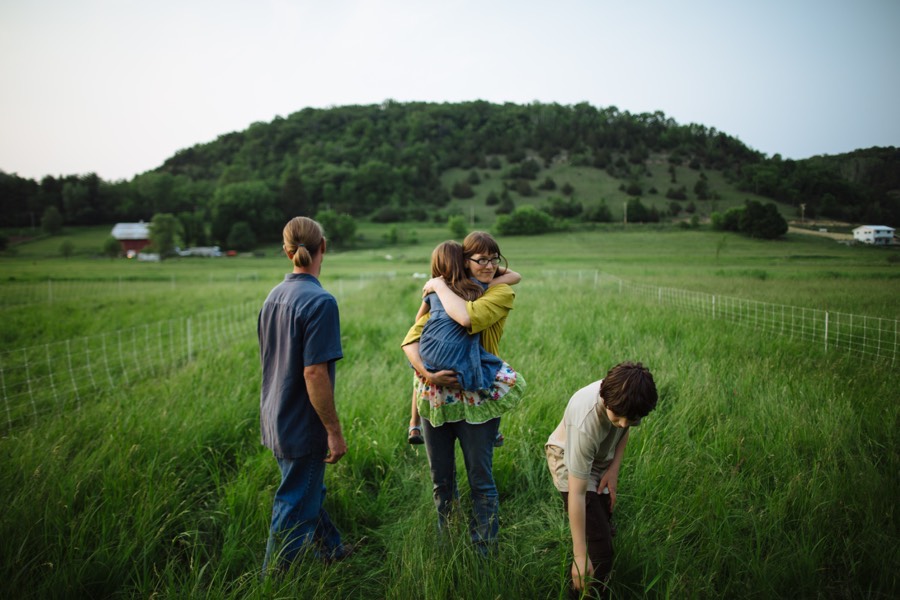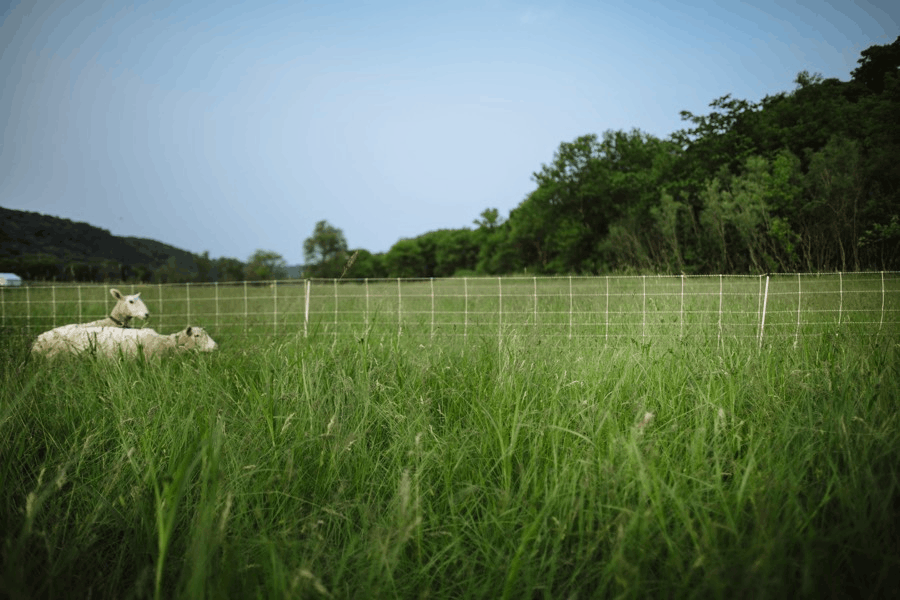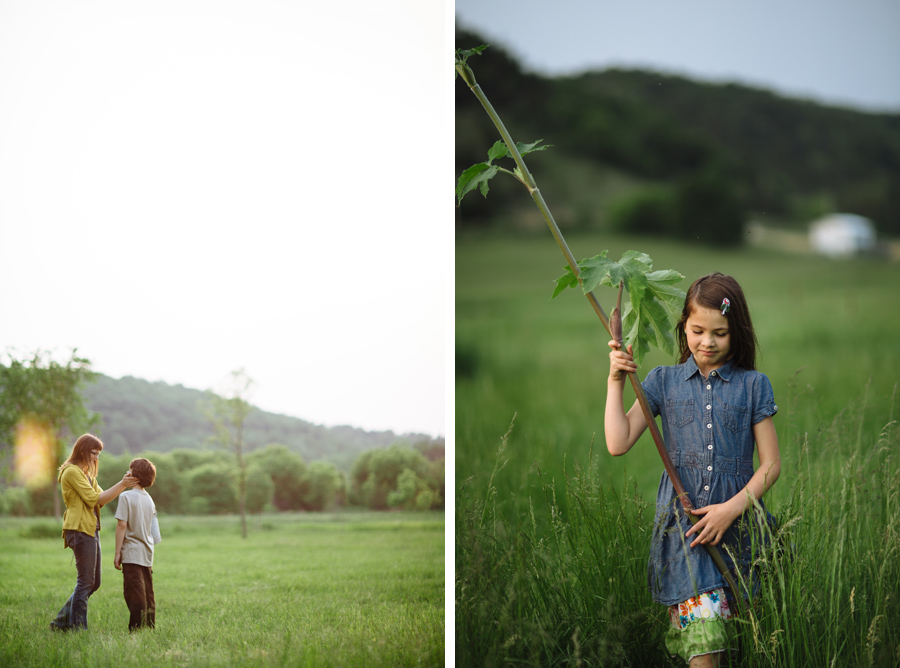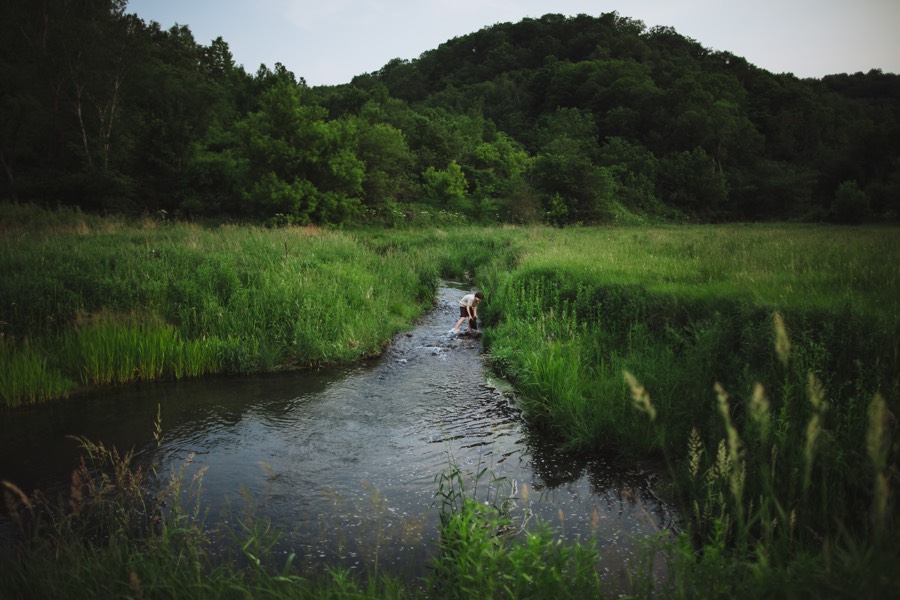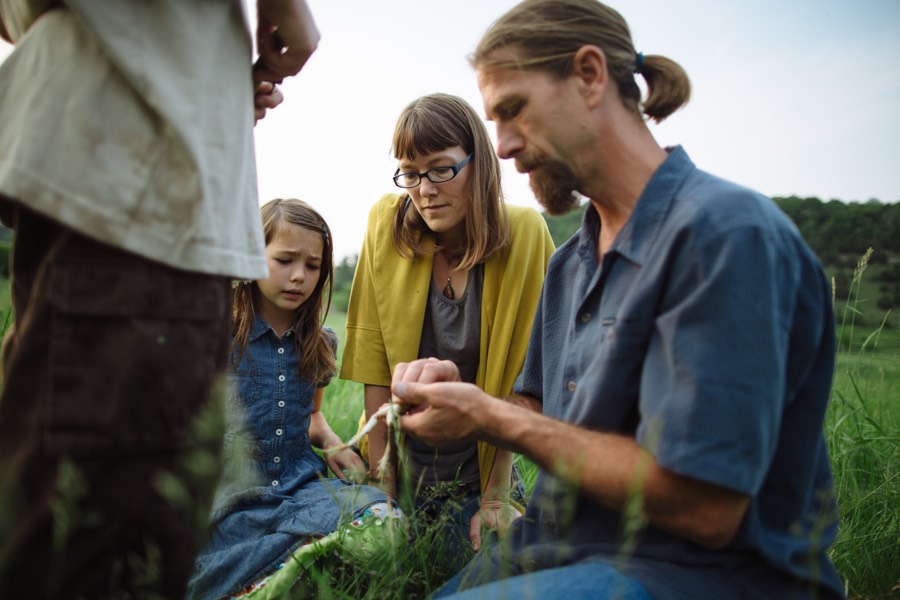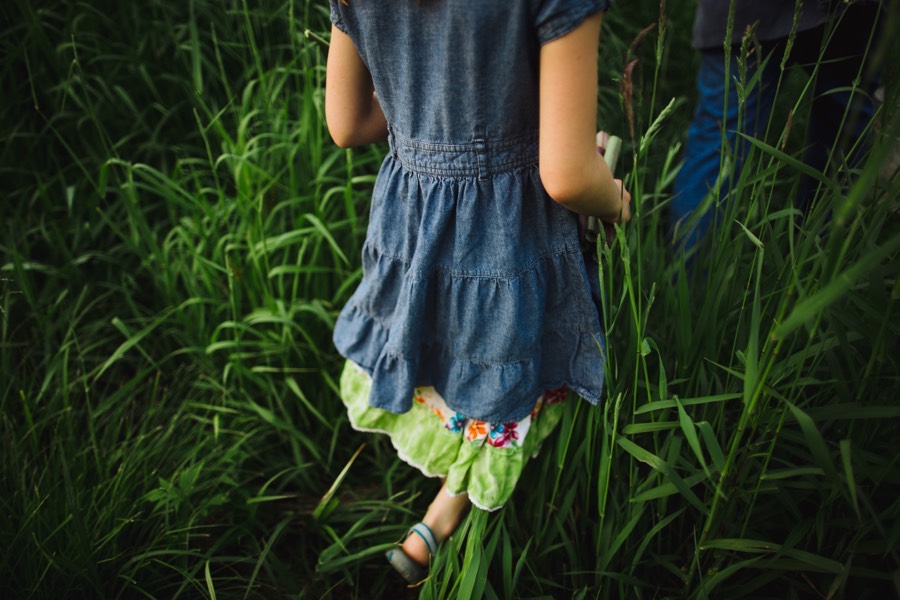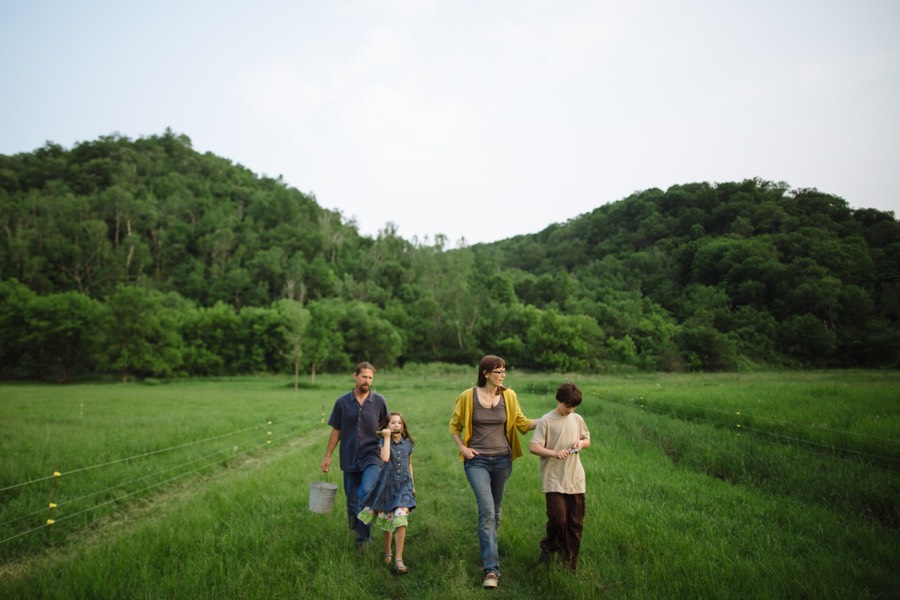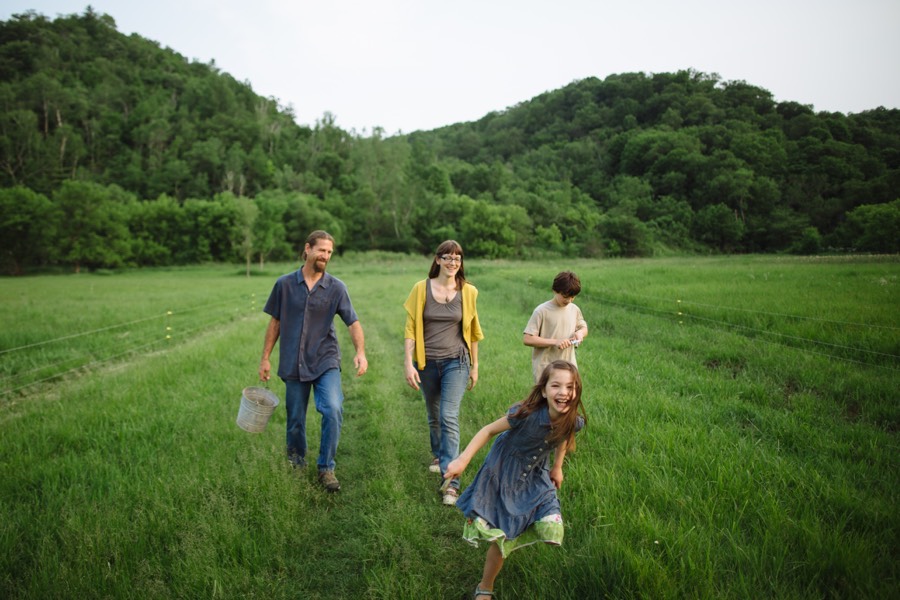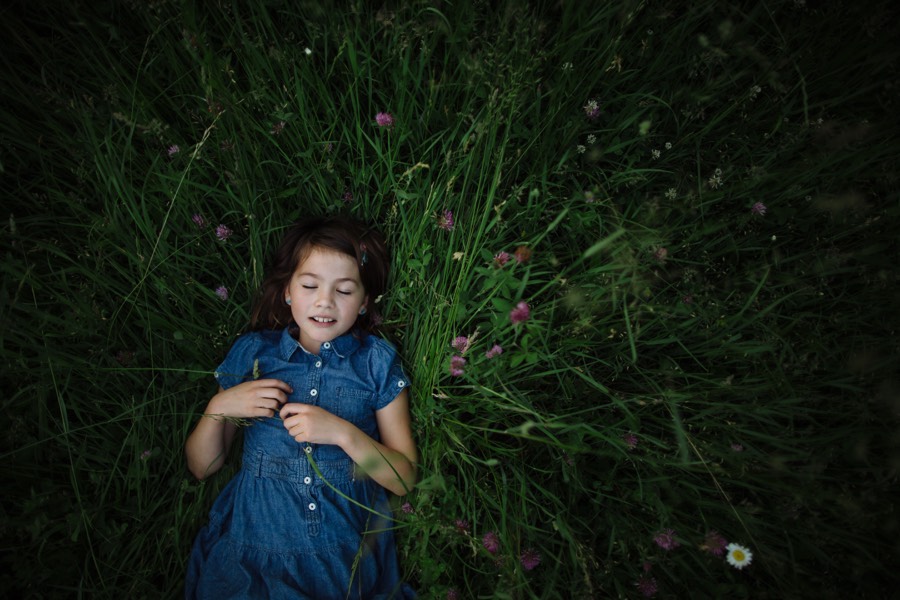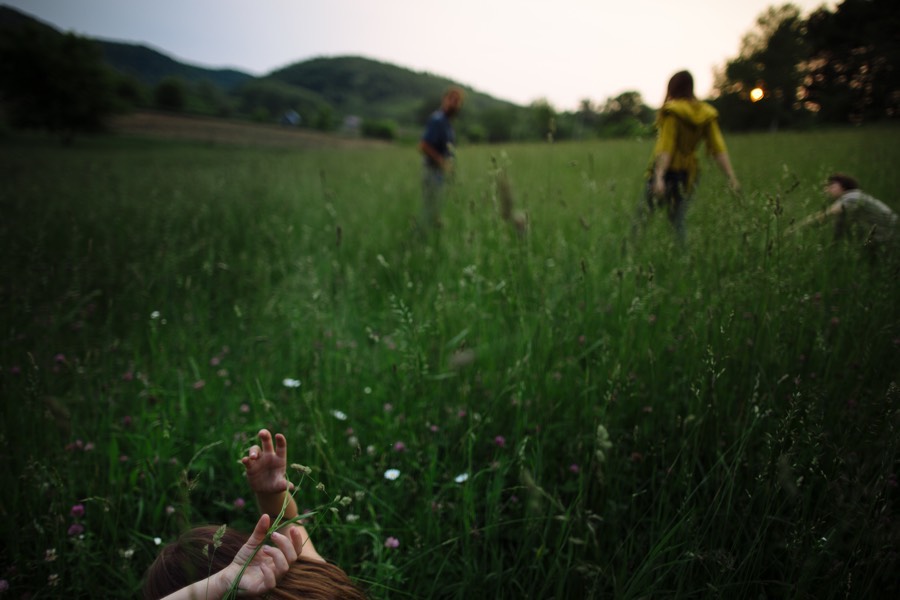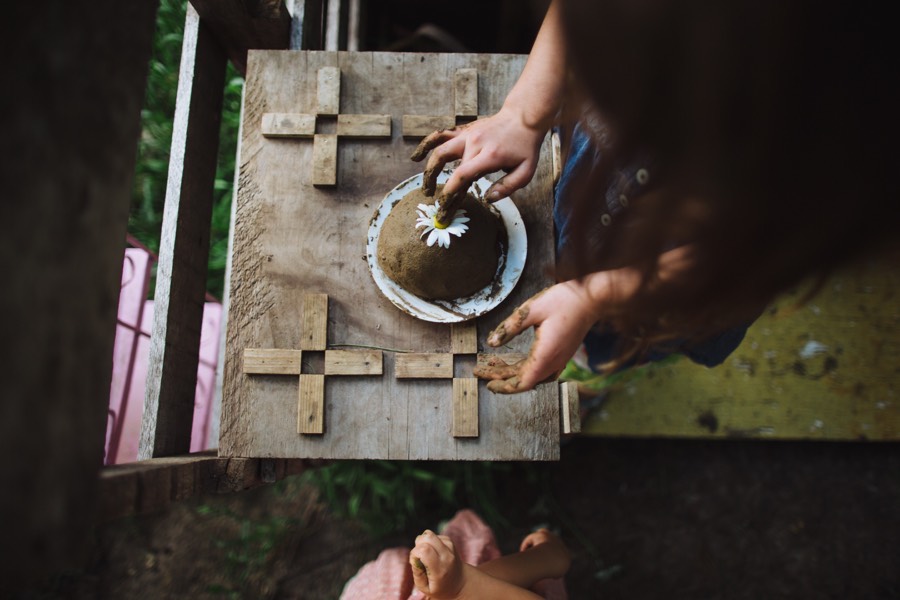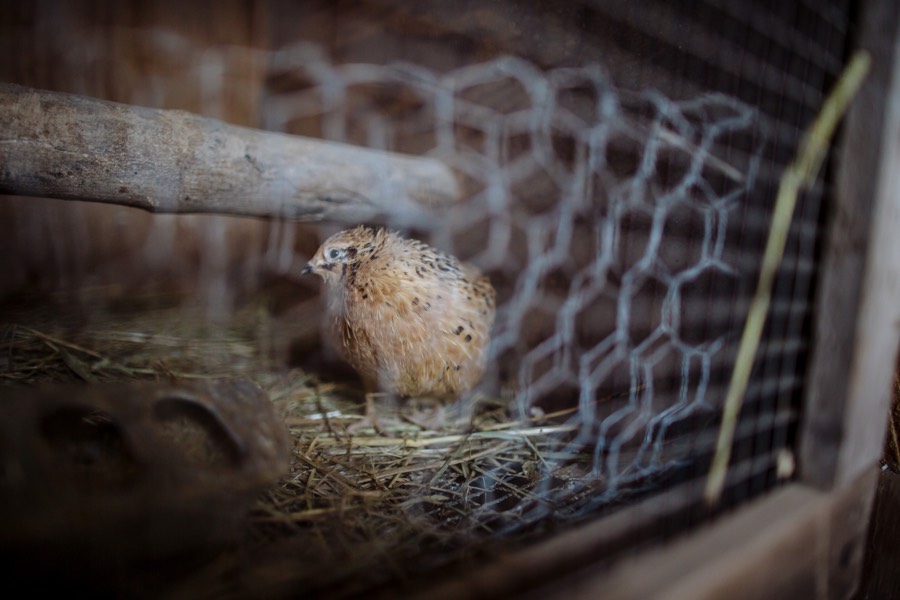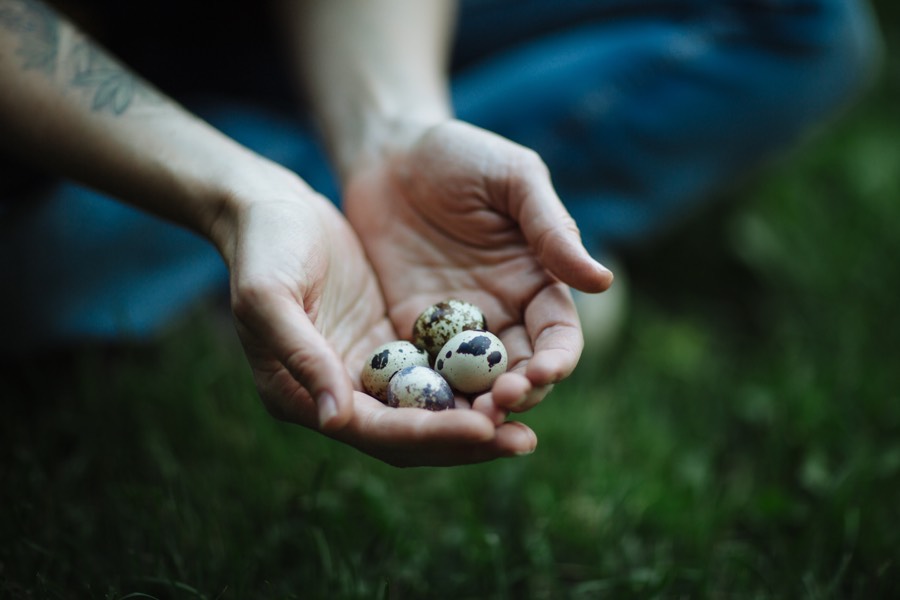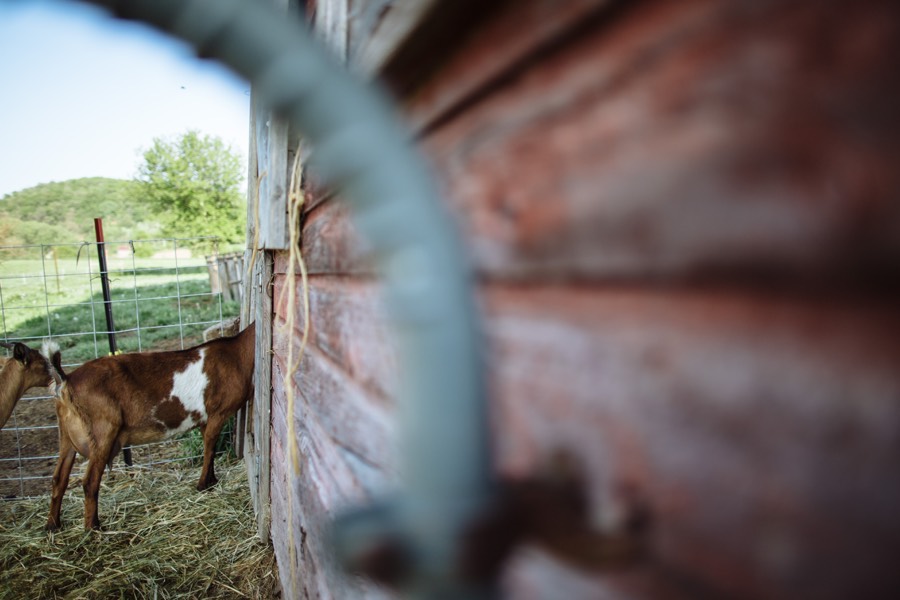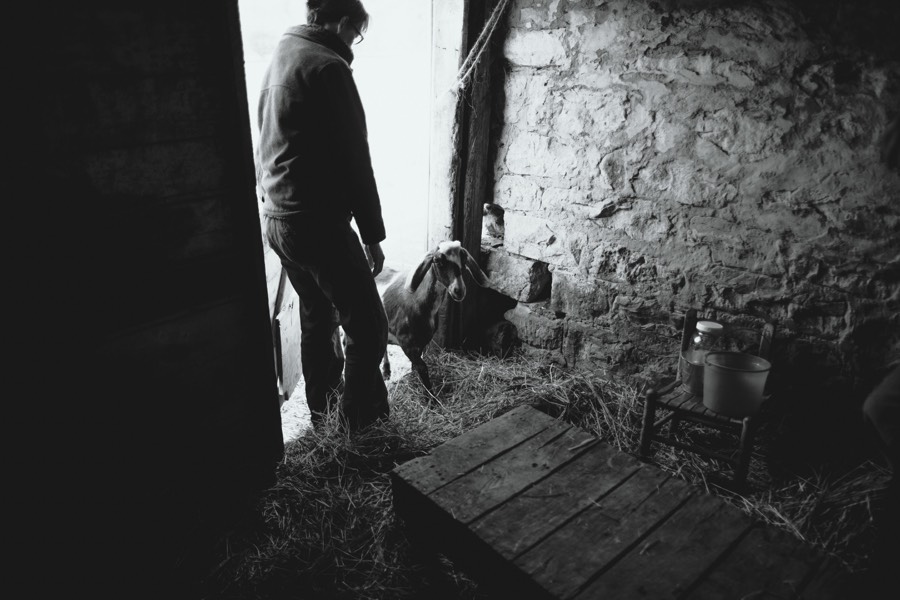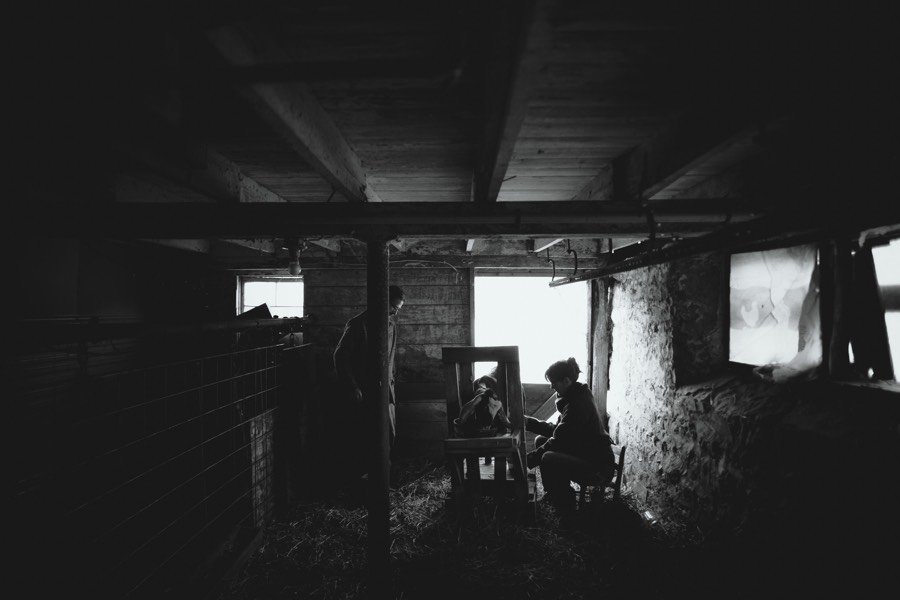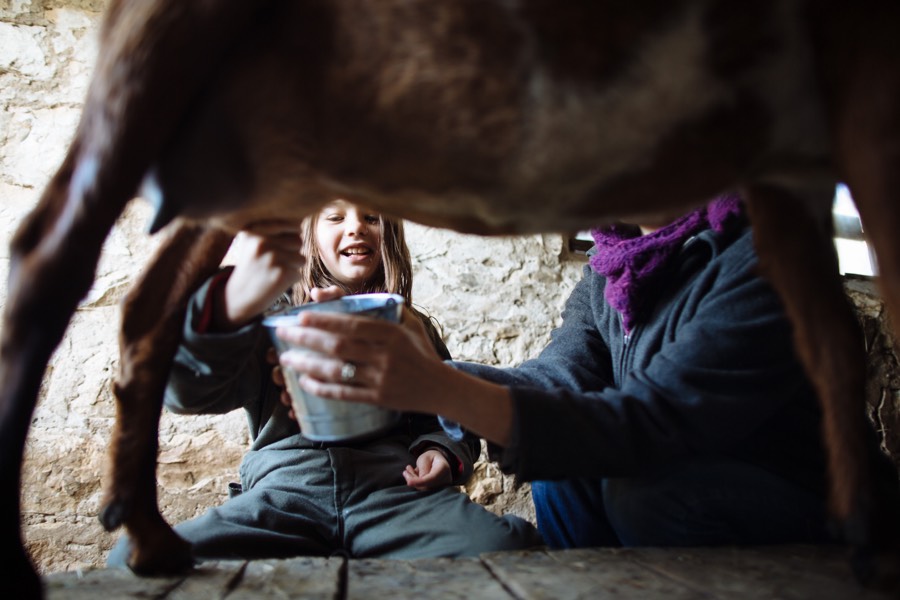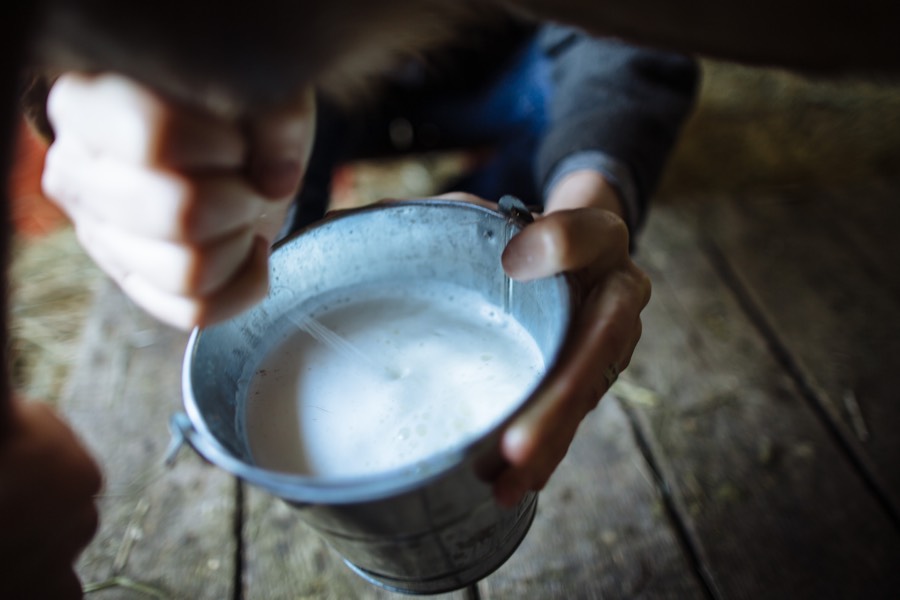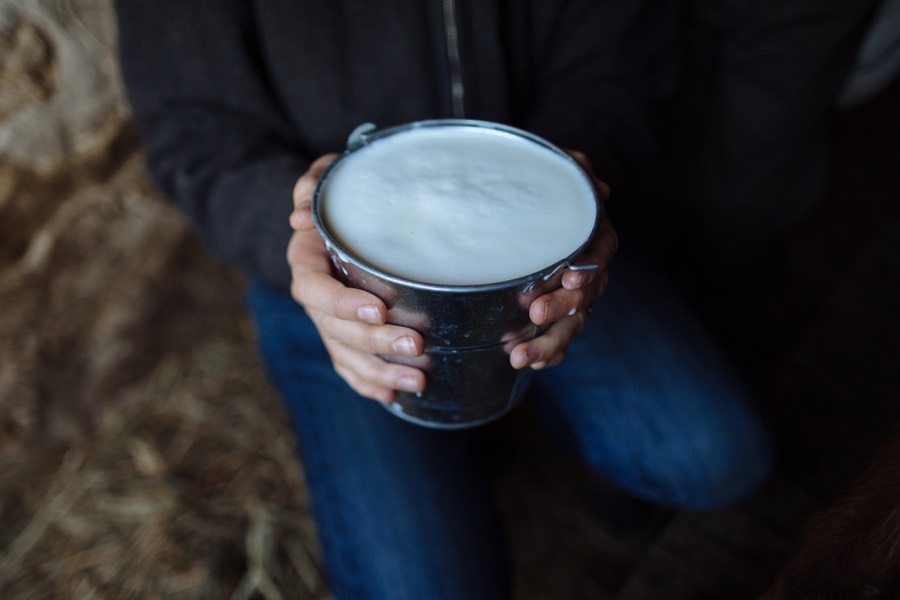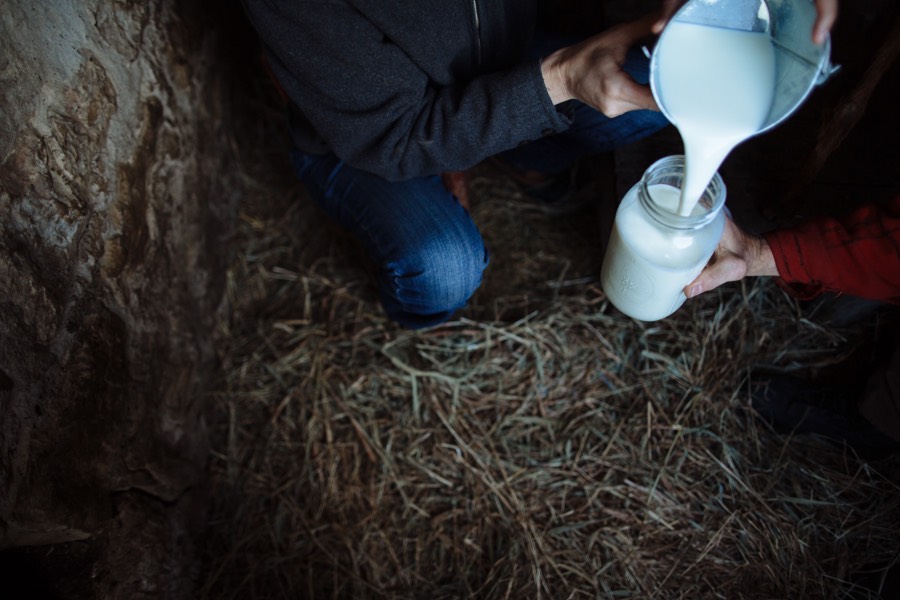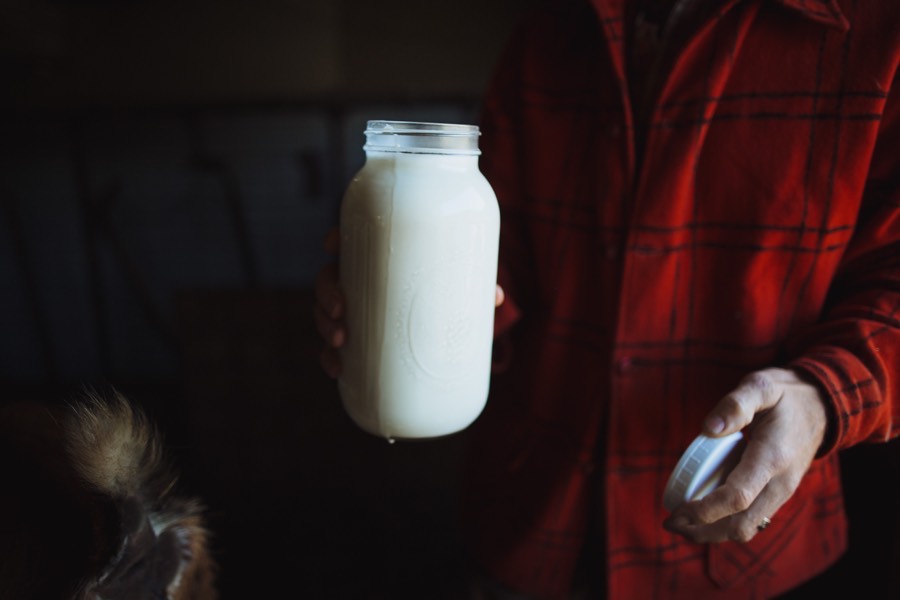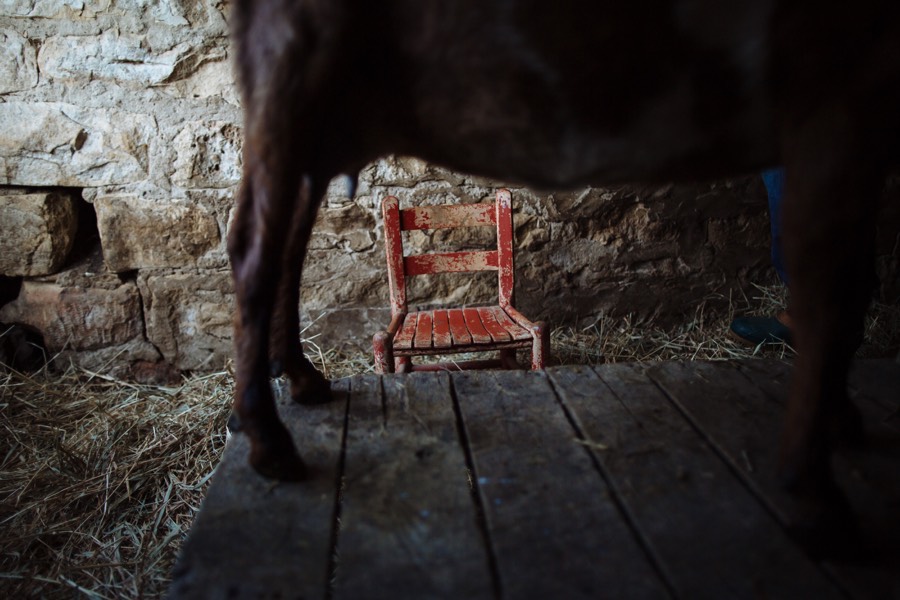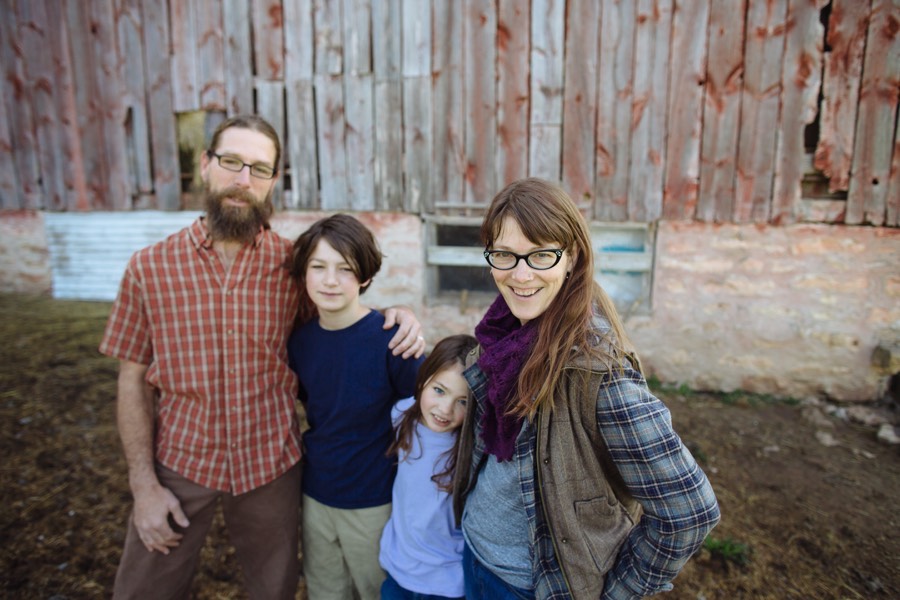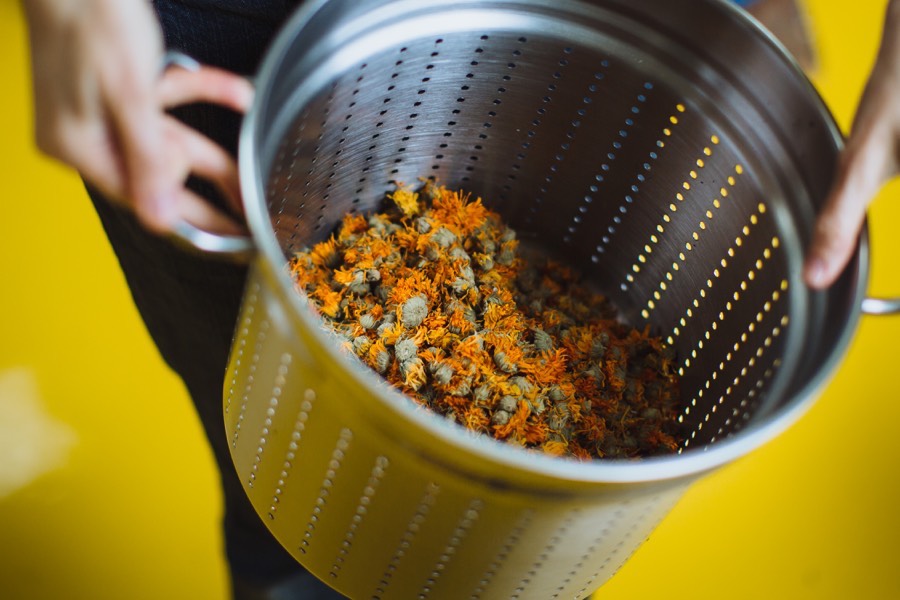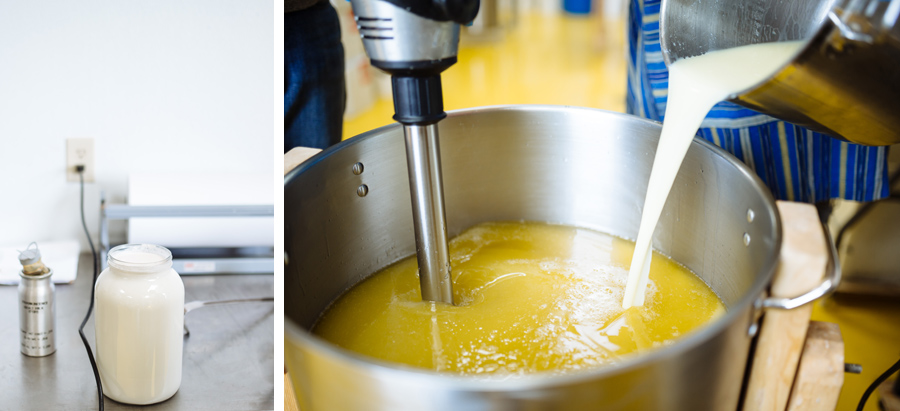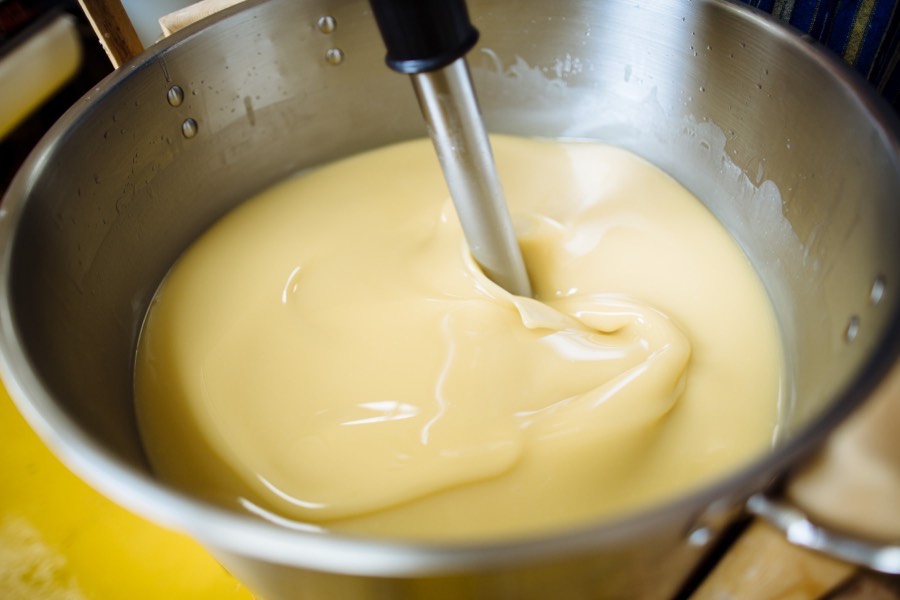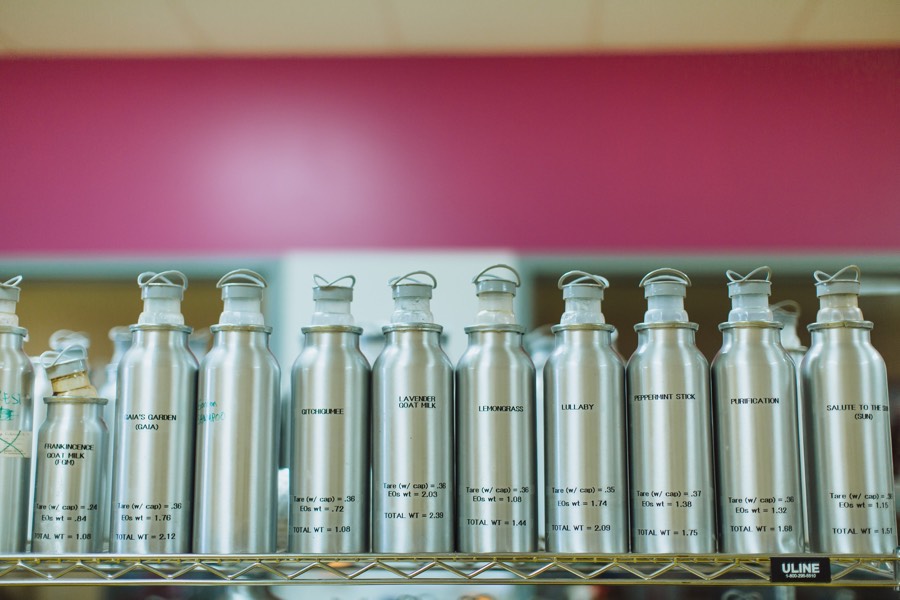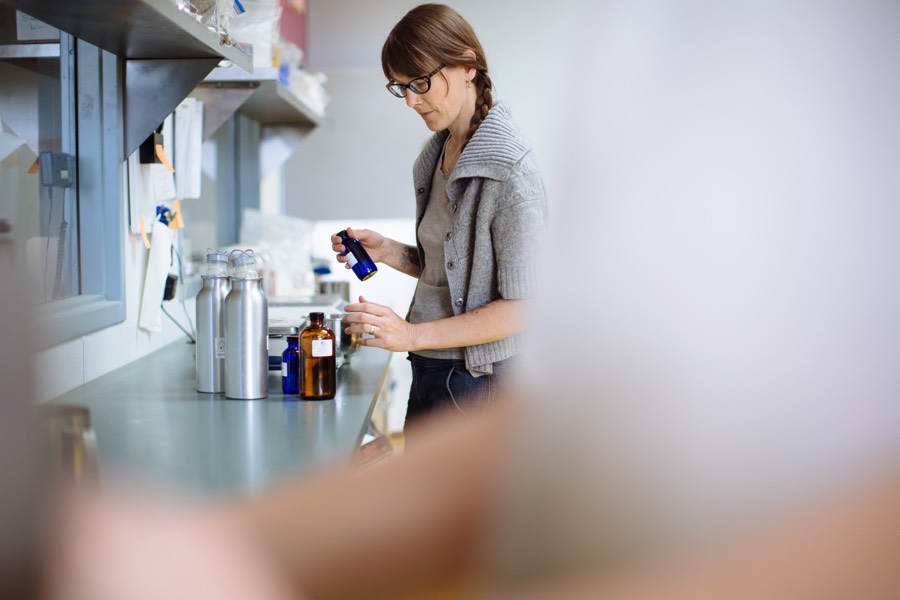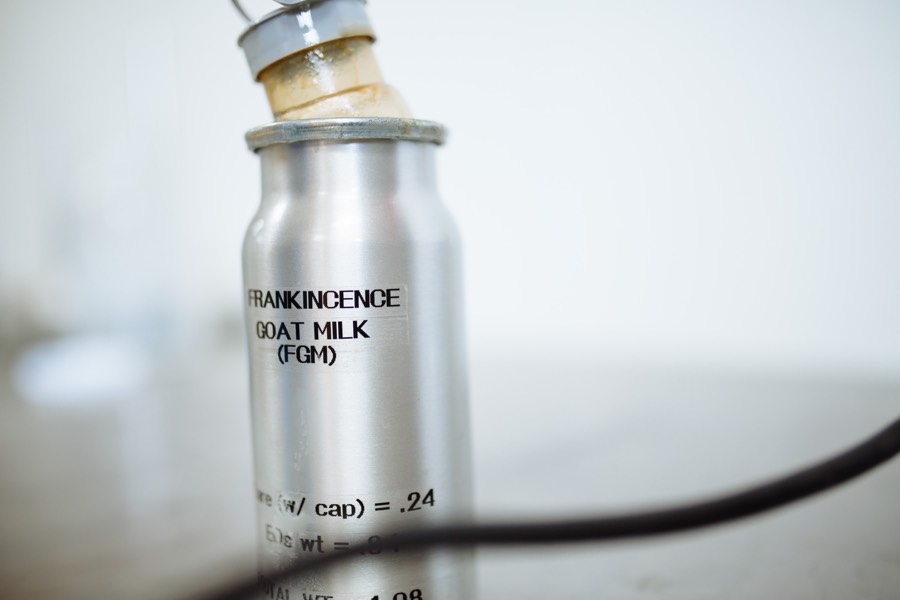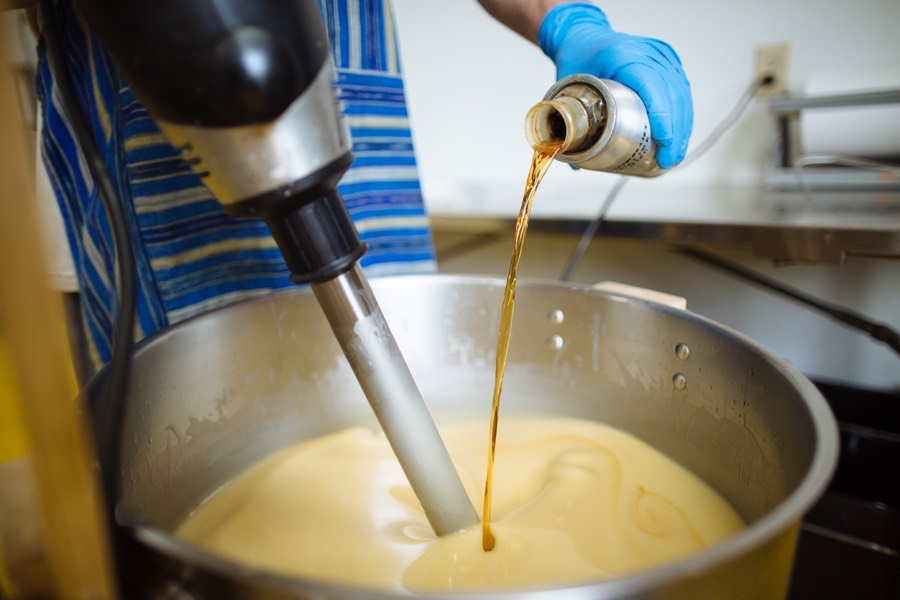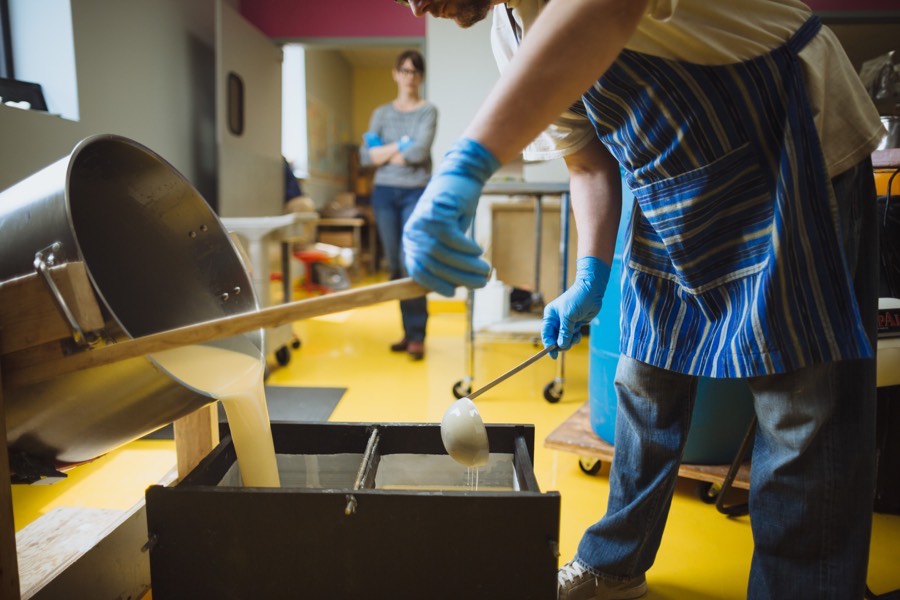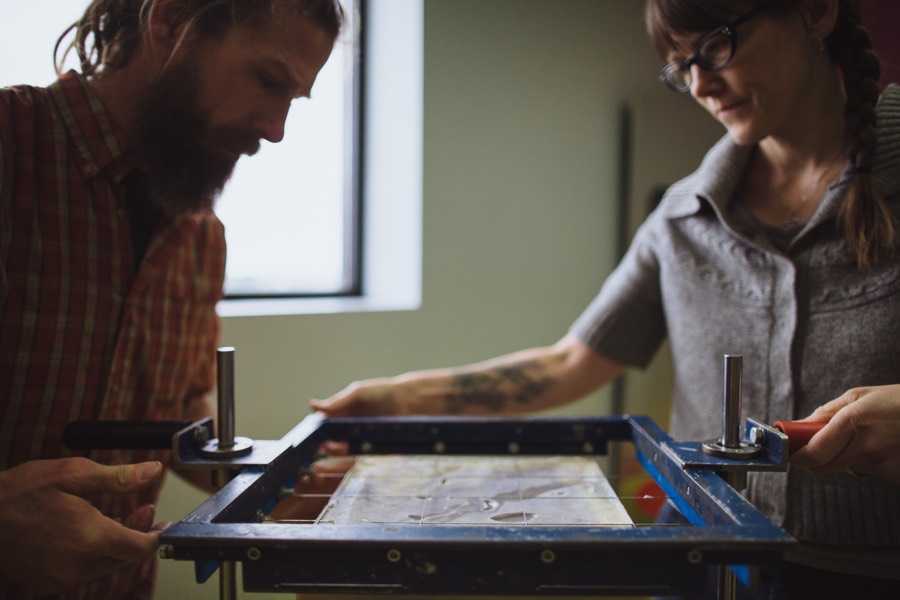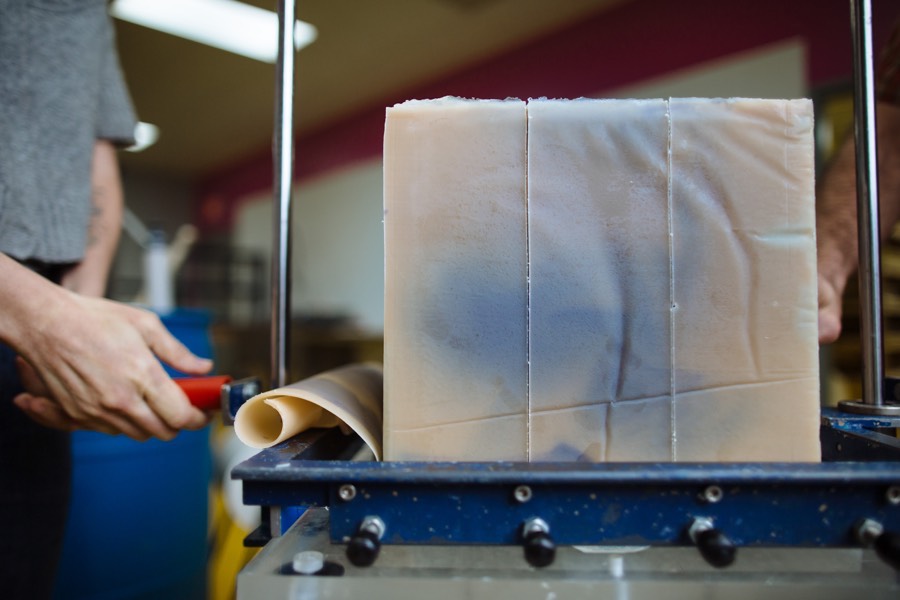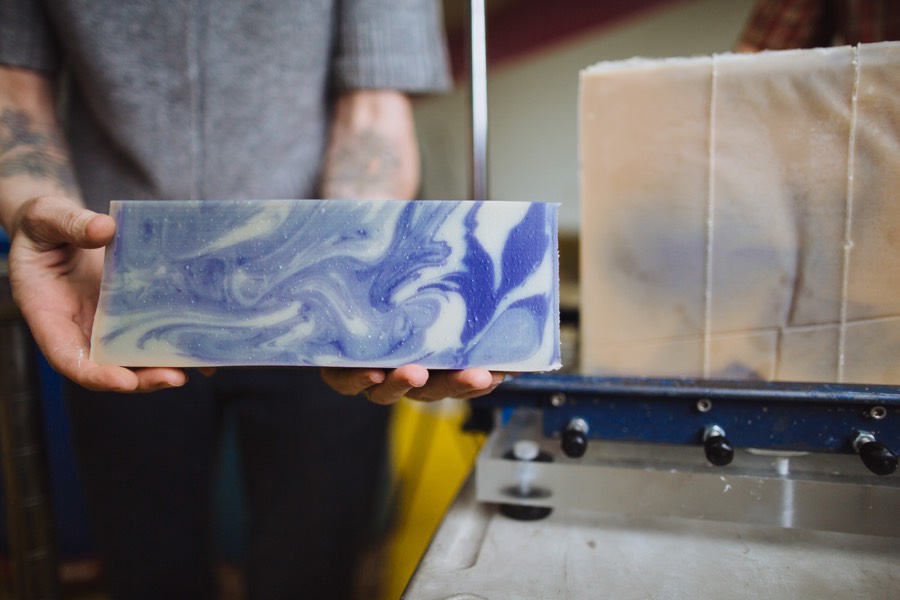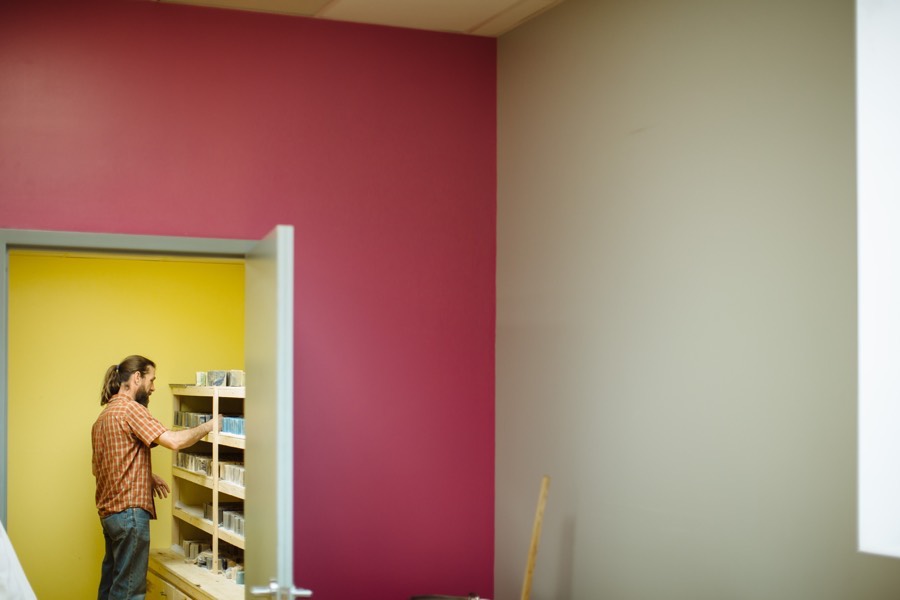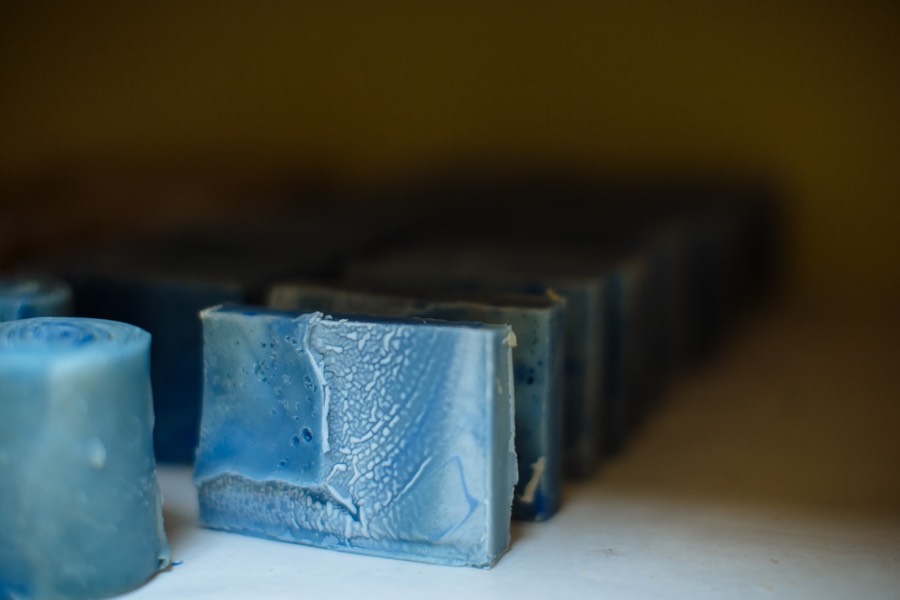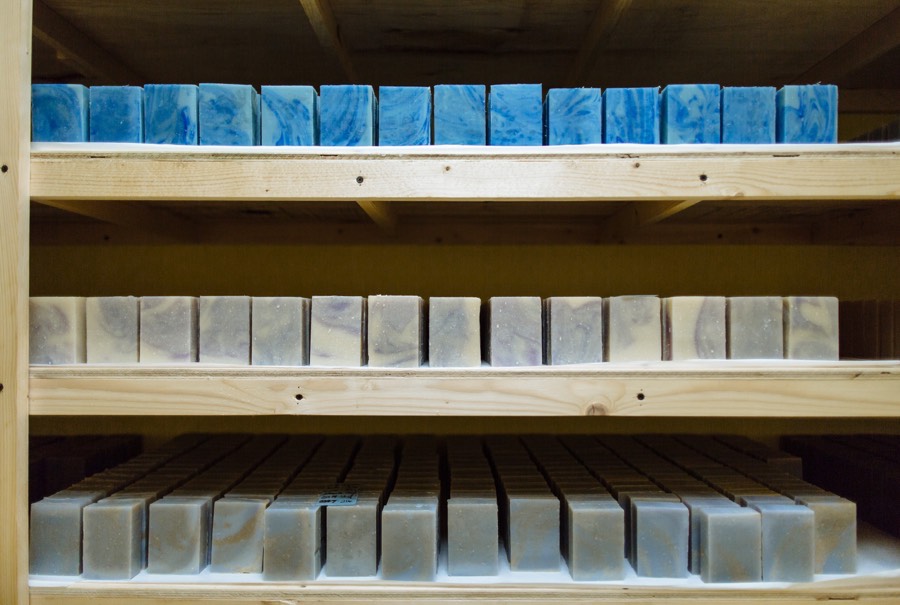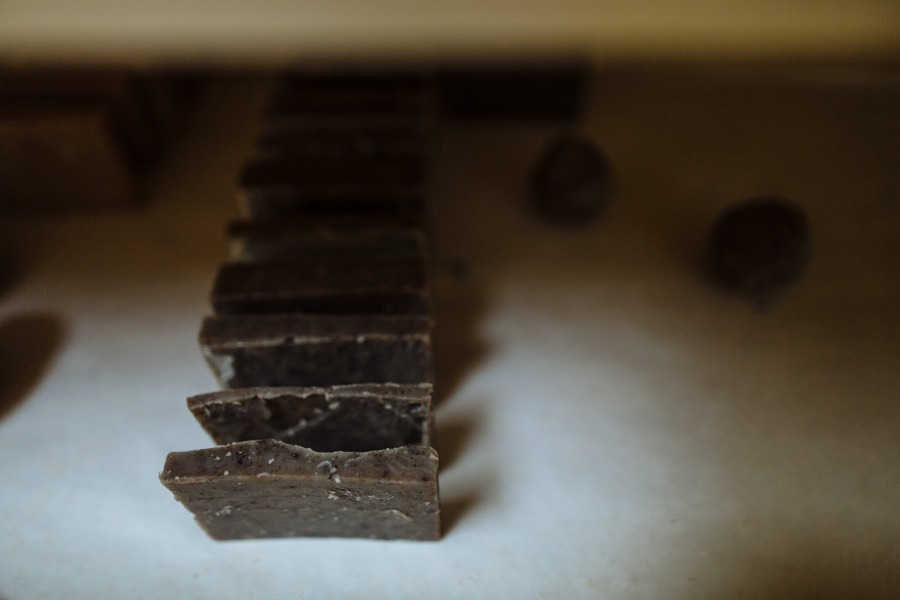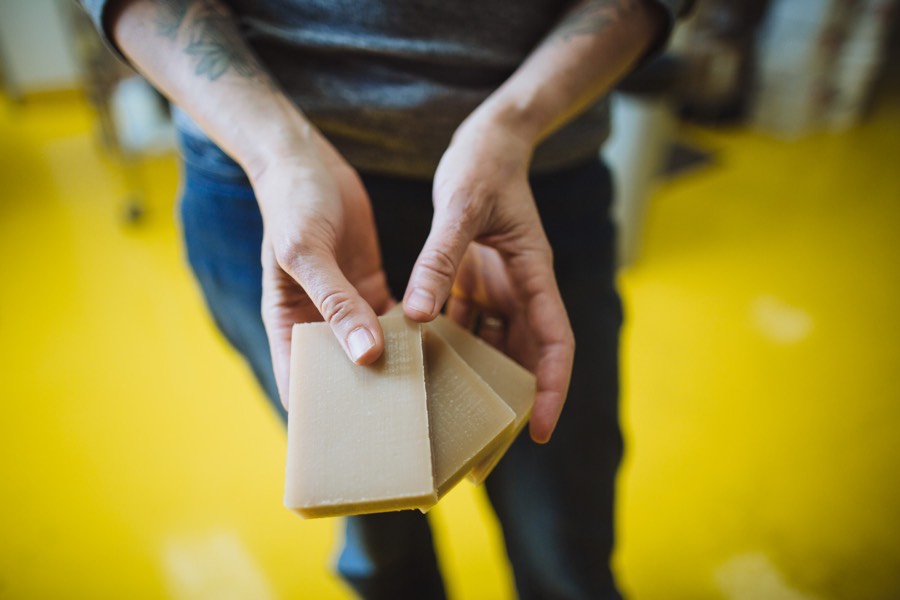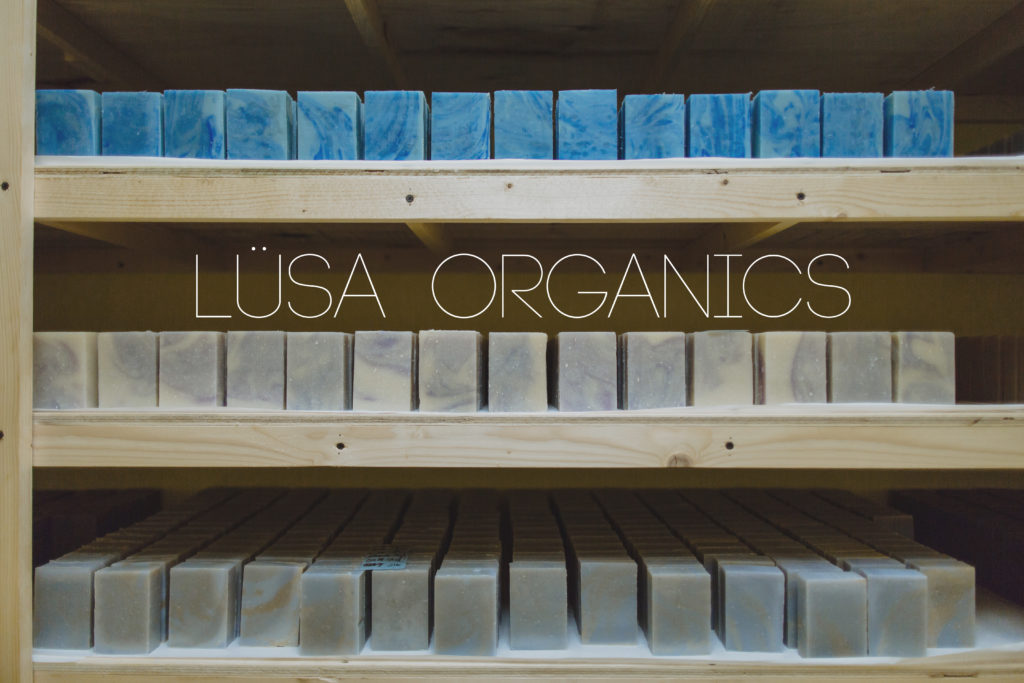
The fact that Ray and I work together, basically full-time, is sometimes shocking to those first hearing it. One of the most-asked questions I receive is something like this, “Wow, don’t you guys get sick of each other?” I’m not as confused by the question anymore, because I understand the perspective, but my answer is usually, “No, not really, we’ve pretty much always done it this way, so it’s kind of all we know. We love it — really — we really love it.” Of course, if you get to know us personally, we’ll gladly peel off the layers of business life overlapping with personal life and reveal all of the chaos and frustrations and inconveniences that come with it. But the overarching theme is that it’s worth it and we value it, so we keep on pressing on!
All this to say, we do know a handful of families who get it. Rachel and Pete of LüSa Organics are one of them. I might argue that their lives are even more intertwined than ours because they have added farm life to their venn diagram, which already included business/family/homeschooling! So, being able to photograph their process, with all of the overlapping of business and family life that comes with it, was a treat. Not only did we get to come home smelling super great, we also were able to see the actual hard work (and time, so much time!) that goes into a process like creating goat milk soap.
Rachel and Pete own a small organic body care company called LüSa Organics. (Their business is named after their children, Lupine and Sage.) Along with a small troupe of helpers, they handcraft, hand cut, hand pour, and hand label every LüSa Organics item in their studio, right here in Viroqua. It’s a labor of love; every recipe comes out of Rachel’s head and heart, and some of the ingredients are grown or produced right on their farm. And the process of soap-making is really beautiful. Here’s a look:
We photographed this in a few stages, to cover a variety of what takes place throughout the seasons (mostly pointing this out for those of you with keen eyes who notice subtle things like clothing changes and children who look a tad bit older). :)
Some responses from Rachel:
>>Why Viroqua?
A few years before we moved here we were feeling isolated and in need of community. We wanted to raise our children in a place where we fit in. So we made a list of our “non-negotiables” – things like access to green space and a like-minded community. There were six things on our list that we needed from the place we would choose as our home. As another friend put it, “Viroqua is where those lines intersect.”
>>Best thing about living in this area?
Oh, goodness? Pick one? We love the feeling of belonging that has come with living here. Being rural, we tend to stand out; be the odd-balls. But here we truly blend. Add to that the strong sense of community and the abundance of great food, all in a rural community and we can’t go wrong.
>>If you didn’t live here, where would you want to live?
It’s a question I rarely entertain. This place is so much our Home. But if we weren’t here we’d probably be somewhere on the North Shore of Lake Superior. That is another place – both in the people and the naturescape that has always spoken to us.
>>Where do you source your materials?
We source our ingredients both locally and globally. One balm might include organic herbs from our friend and neighbor Harriet and also fair trade shea butter from a women’s worker-owned cooperative in Togo. We recently launched a new line of soaps called Locavore made with local grassfed beef tallow and organic sunflower oil. And, of course, we provide some of our own goat milk! Our goal is to source our materials as ethically and sustainably as possible, and local whenever we can.
>>What brought you into this line of work?
I started making soap as a hobby back in the 1990’s. (I may or may not have been inspired by a Martha Stewart Living article. Ahem.) I was a graduate student studying environmental education, but found myself so drawn to working with my hands and integrating elements of nature into products that people could enjoy. Soap and body care remained a hobby for most of a decade before I finally followed my heart and left my career to make body care full-time.
>>What is the best part about working with your hands?
For me it is a creative process in many ways. Often it is need driven – say, a particular balm I would like to make for a certain purpose. Other times the plants themselves beg to be used. But to take things so simple as wild plants and organic oils and bring them together into products that are such a pleasure to use? It’s a delightful way to spend my days.
>>How do you relax?
I relax best in nature. We have a little family habit that whenever someone is stressed we offer up a walk to the creek. Because the creek always helps. I also knit, sew, write, cook, and take photographs throughout my days.
>>What’s your favorite part of your schedule/lifestyle?
Our life really lacks compartmentalization. We homeschool, and run a business and a farm together. I am so thankful for the flow between these varied parts of my life; how each one blends into the next. We don’t have work time/farm time/family time. It’s all one. And I don’t take that gift for granted.
>>Favorite meal?
A meal that combines home-raised, locally-grown, and wild foods is best. Say our own lamb served with foraged greens from from the forest edge; veggies from the garden and homemade ice cream. Nothing finer!
>>List the steps of your goat milk soap-making process.
1. Milk the goat. (Everyday!) We put a full gallon of fresh goat milk into ever batch of our goat milk soap. We milk by hand each morning. Morning milking is the anchor of our day. The milk is then filtered and quickly chilled to keep it sweet (and to prevent it from becoming goaty).
2. Combine lye, milk, and oils. Soap is chemistry – an acid-base reaction between the fatty acids of the oils and milk and the base of a carefully weighed amount of sodium hydroxide (lye). Each ingredient is weighed, brought to the proper temperature, the mixed.
3. Stir. The soap is stirred with a large submersible blender for 15 to 20 minutes. As the acid-base reaction begins taking place the soap slowly thickens until it resembles a thin batch of stovetop vanilla pudding.
4. Mix in additives. After the soap begins to trace (thicken) herbs, mineral pigments, and essential oils are added. This gives each bar it’s signature scent, texture, and color.
5. Pour. The raw soap is poured into a lined mold where the rest of the saponification process will take place. It’s not soap yet, but it will be by the time we unmold the batch.
6. Insulate. The soap is carefully insulated and tucked away for three days where the chemical reaction is completed. Soap chemistry is an exothermic reaction (heat-producing) so the whole batch gradually heats itself during the process. When the chemical reaction is complete the soap cures and begins to harden. Now it’s soap.
7. Cut. The huge blocks of soap is cut by hand into bars. We get approximately 216 bars of soap from each batch.
8. Cure. After cutting, the bars are still quite soft and not yet mild enough for the bath. The bars are carefully stacked on shelves in our curing room where they will sit for one month to harden and mellow, becoming a gentle, long-lasting, wonderful-lather making bar.
9. Bathe. After curing, the soaps are ready for our customers sinks, showers, and tubs!
_____
Something unique about this Artist Story is that we have bought many of their products over the years, so we can wholeheartedly recommend LüSa. Here’s my list of favorites: Baby Soap, Lullaby Soap, Baby Wipe Juice, Da Balm, Breathe Deep, and Hey You. Shoo.
Also, here’s where you can find out more about LüSa Organics (all full of beautiful photos):
Online store (after you get your first shipment, you’ll be hooked)
Rachel’s blog
Facebook
Instagram
This post is part of our Artist Stories series – to find out more about why and what we’re doing, head here. Follow along on Facebook to watch for more Artist Stories like this!
